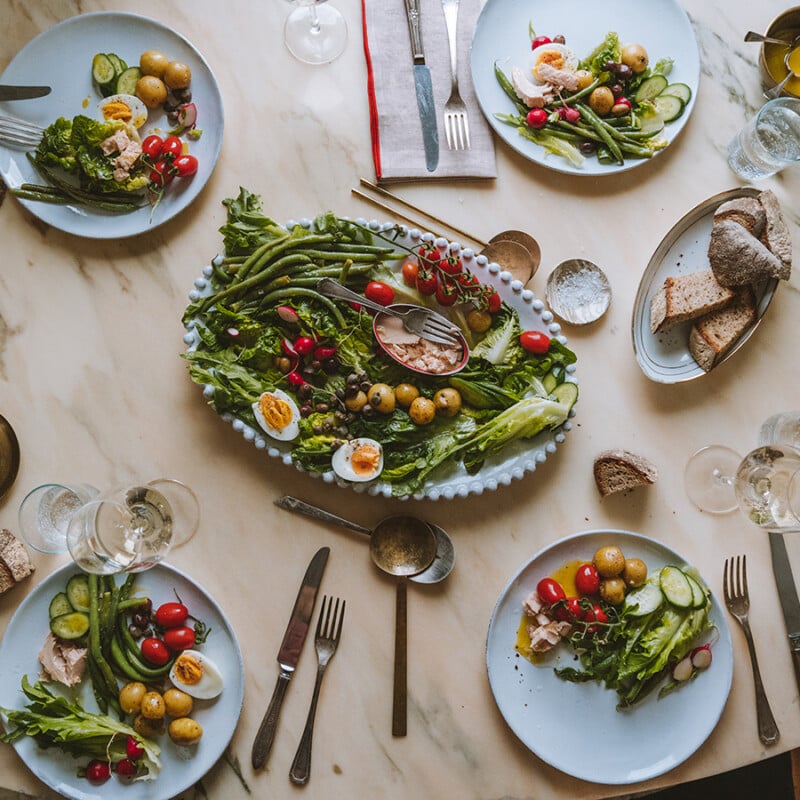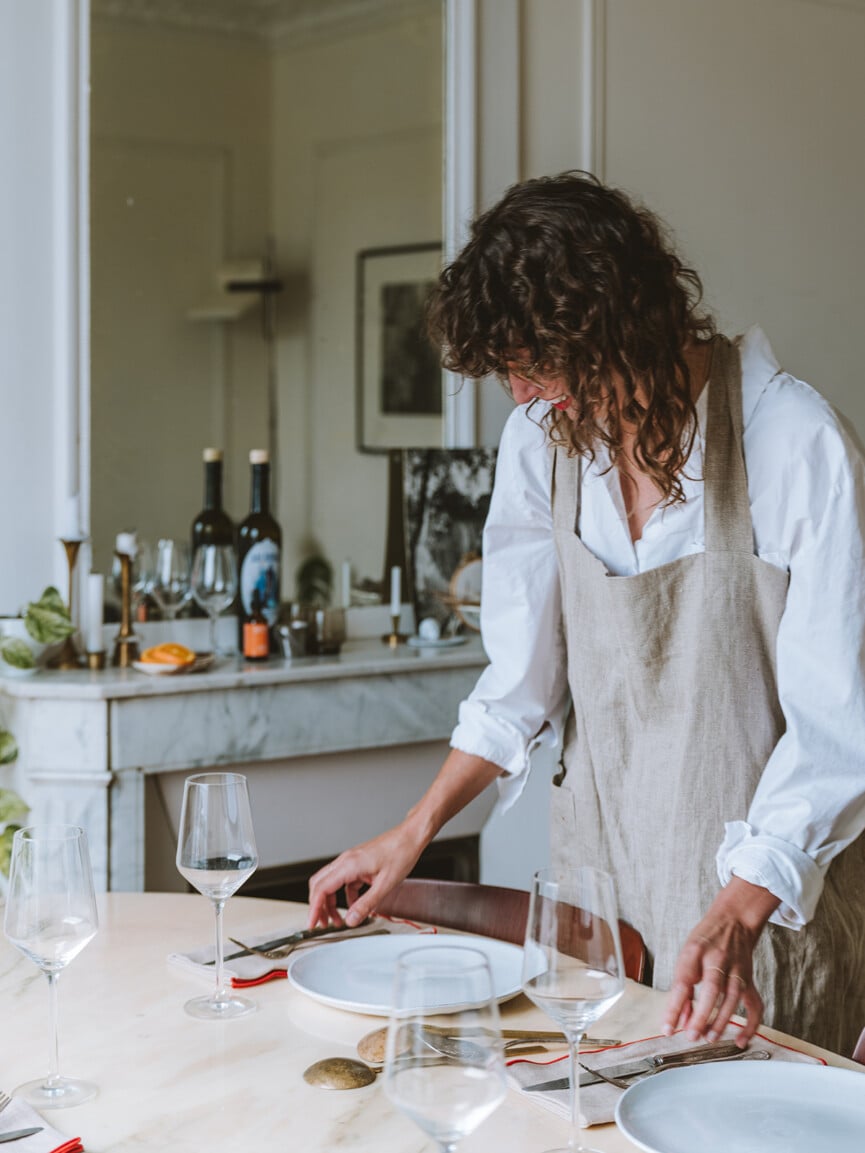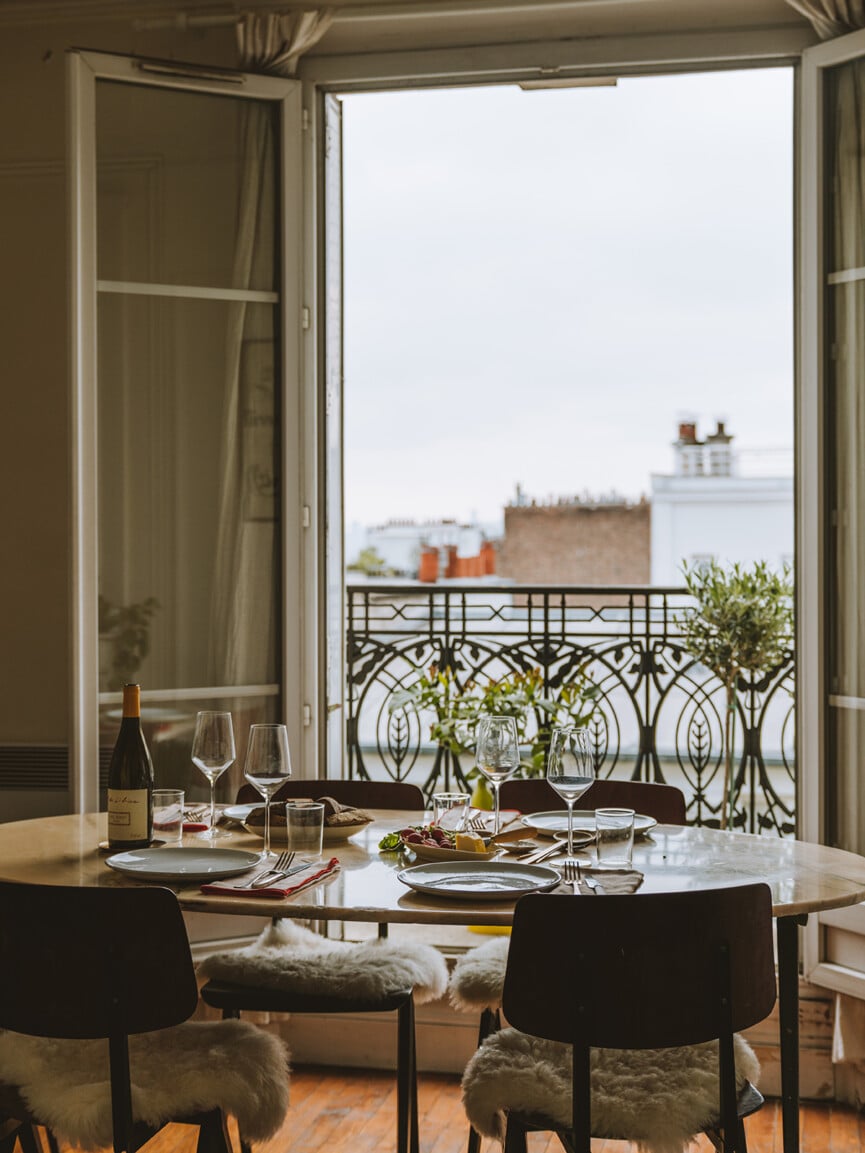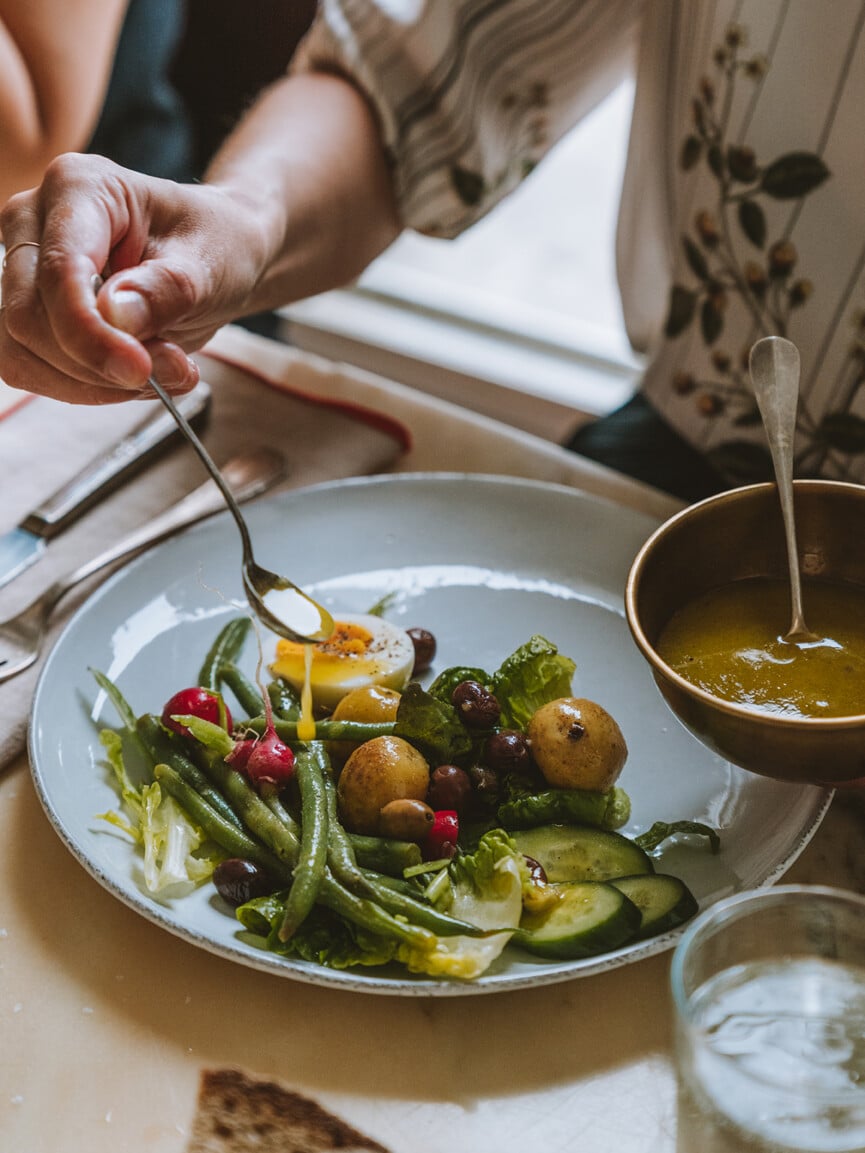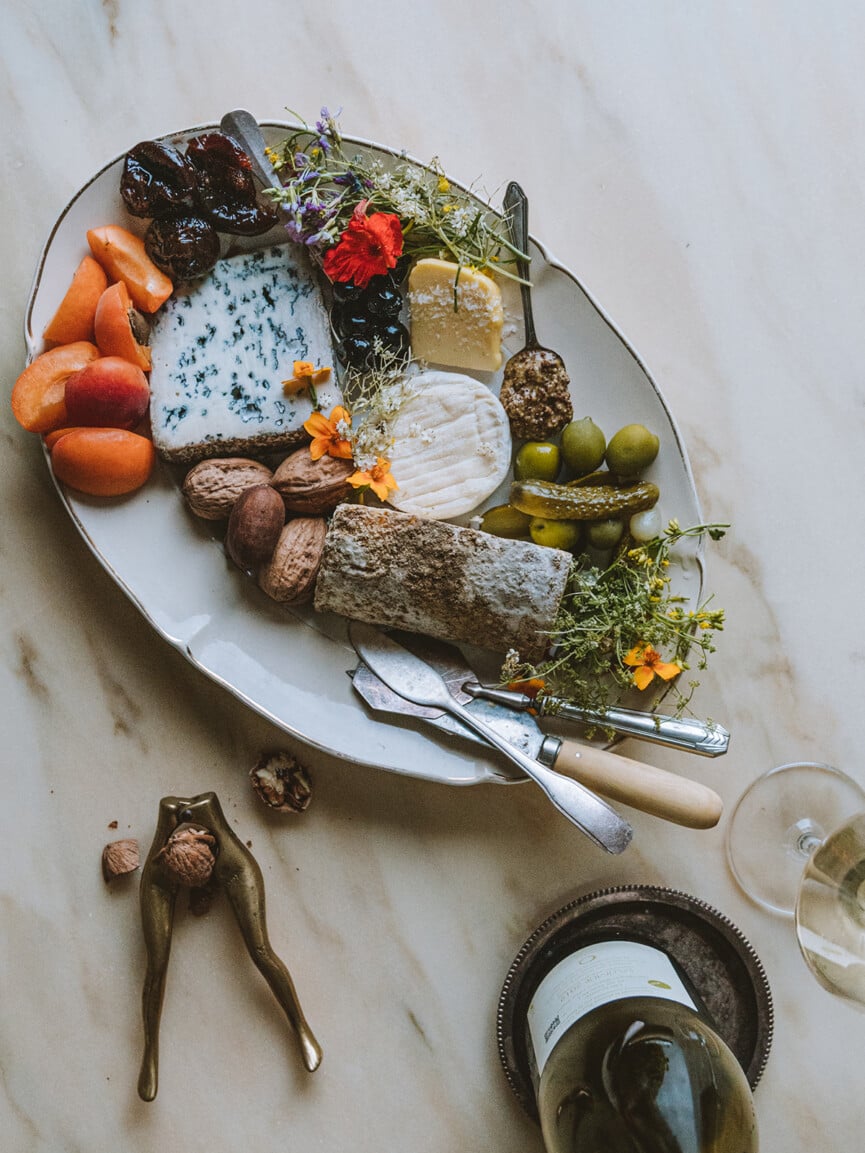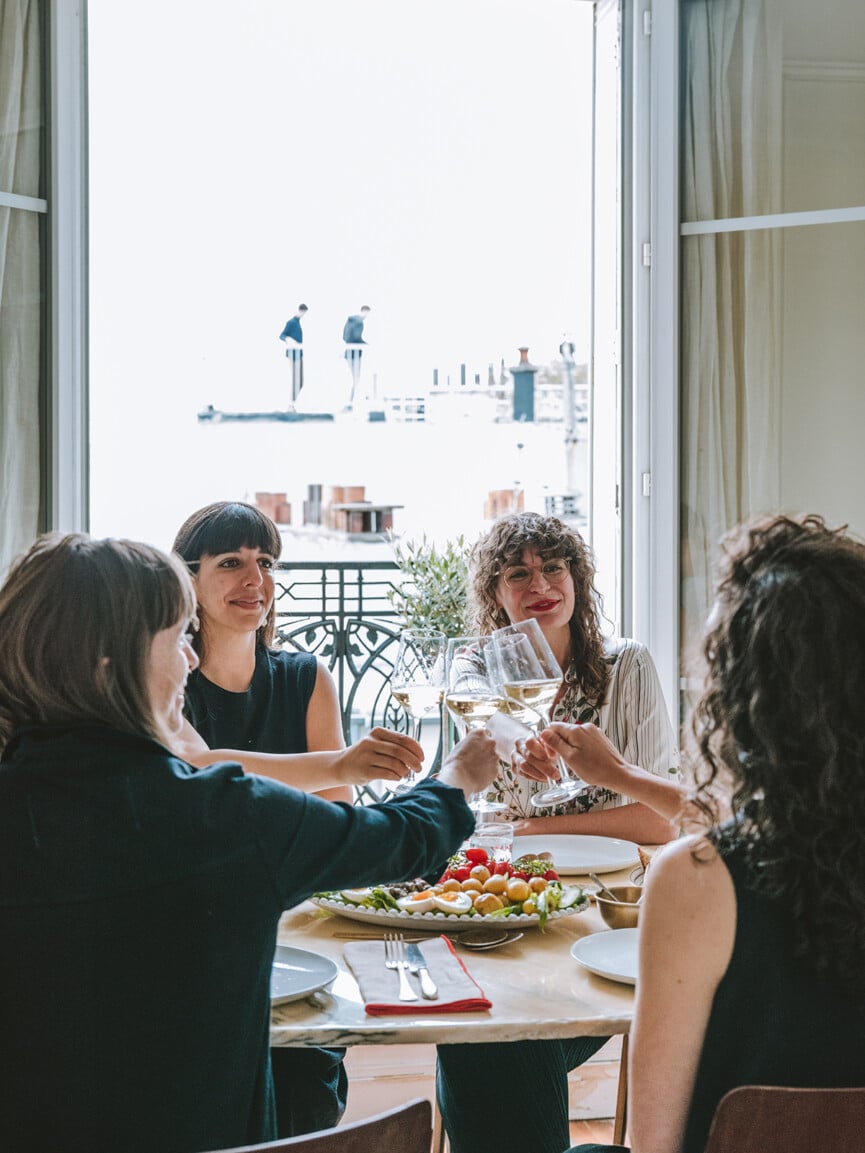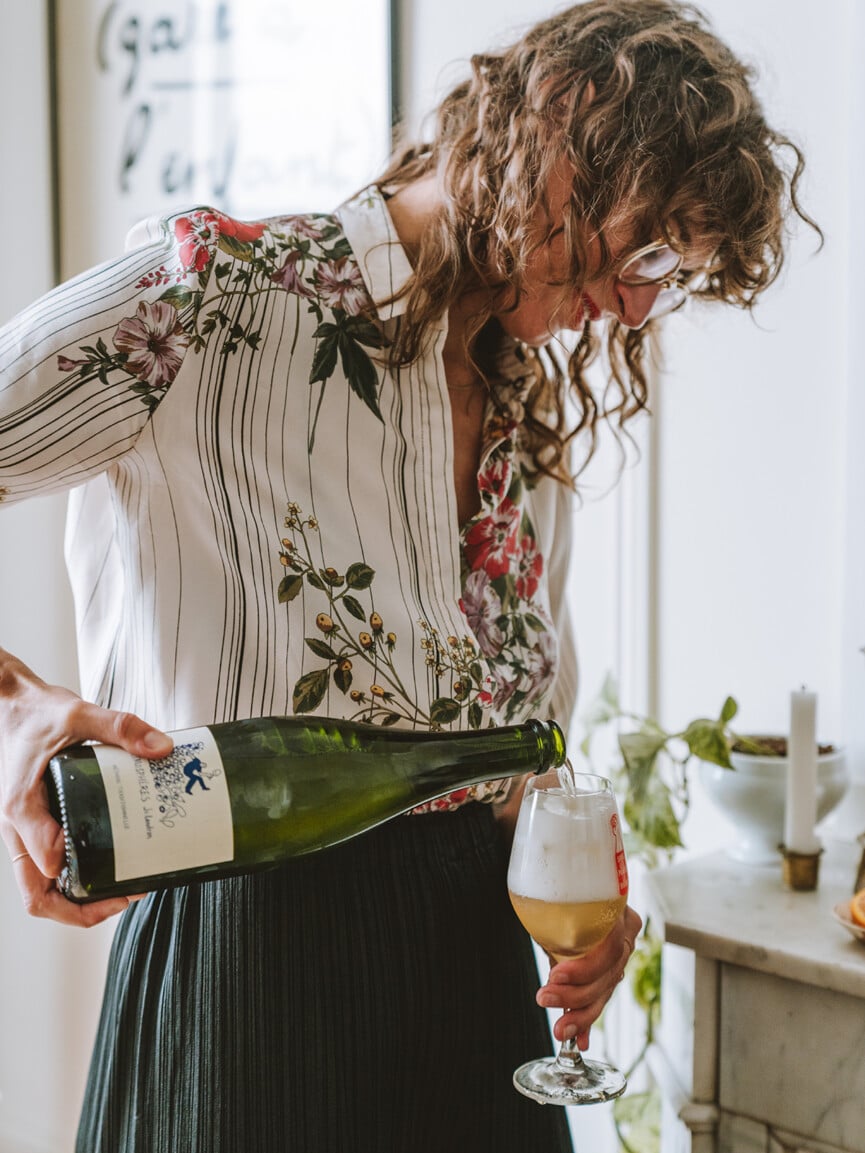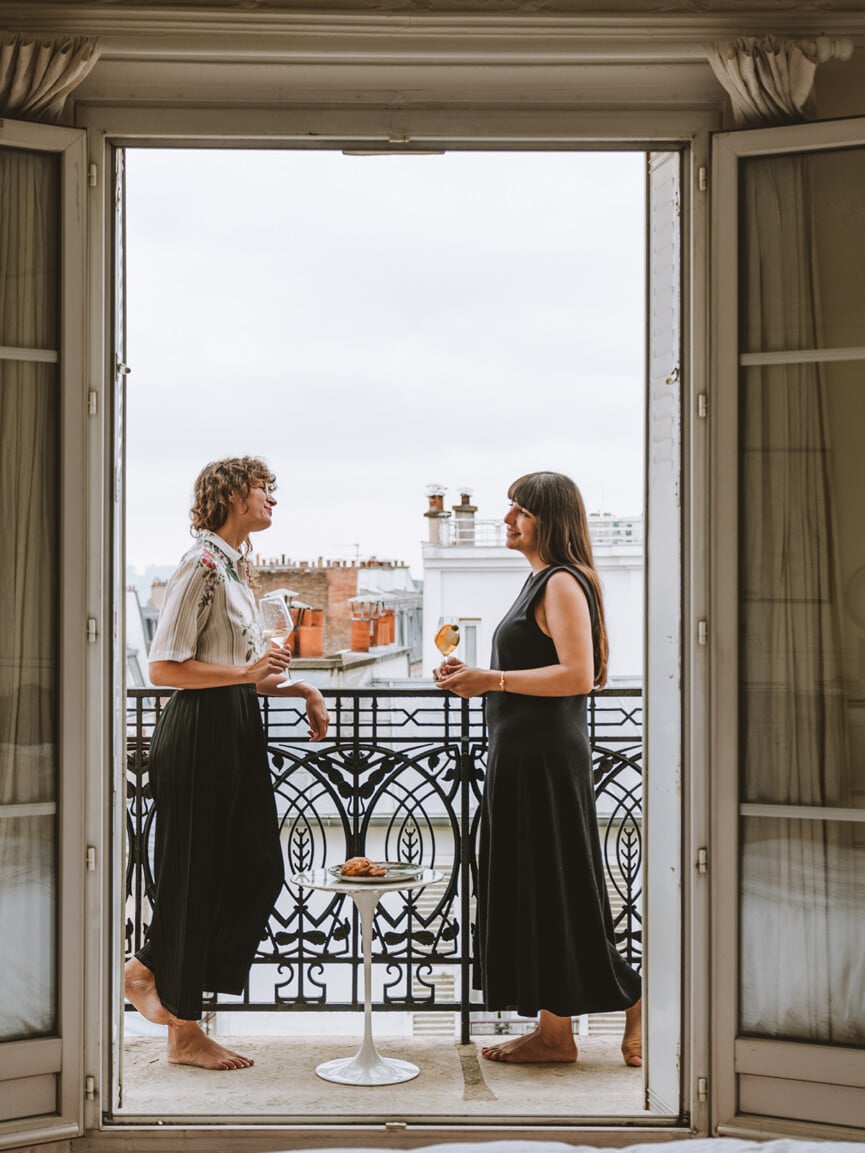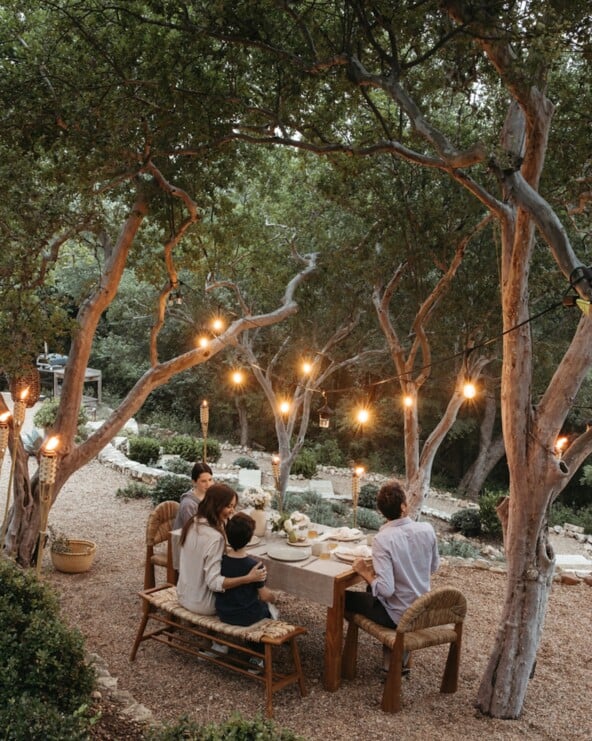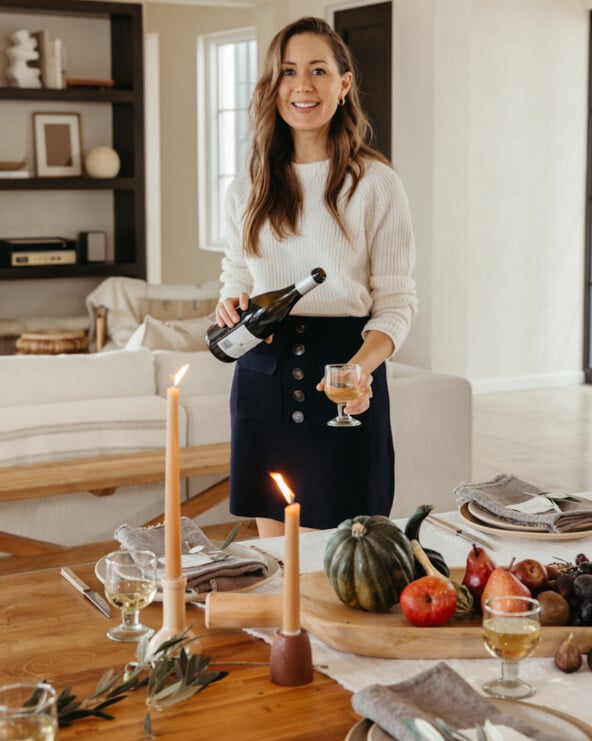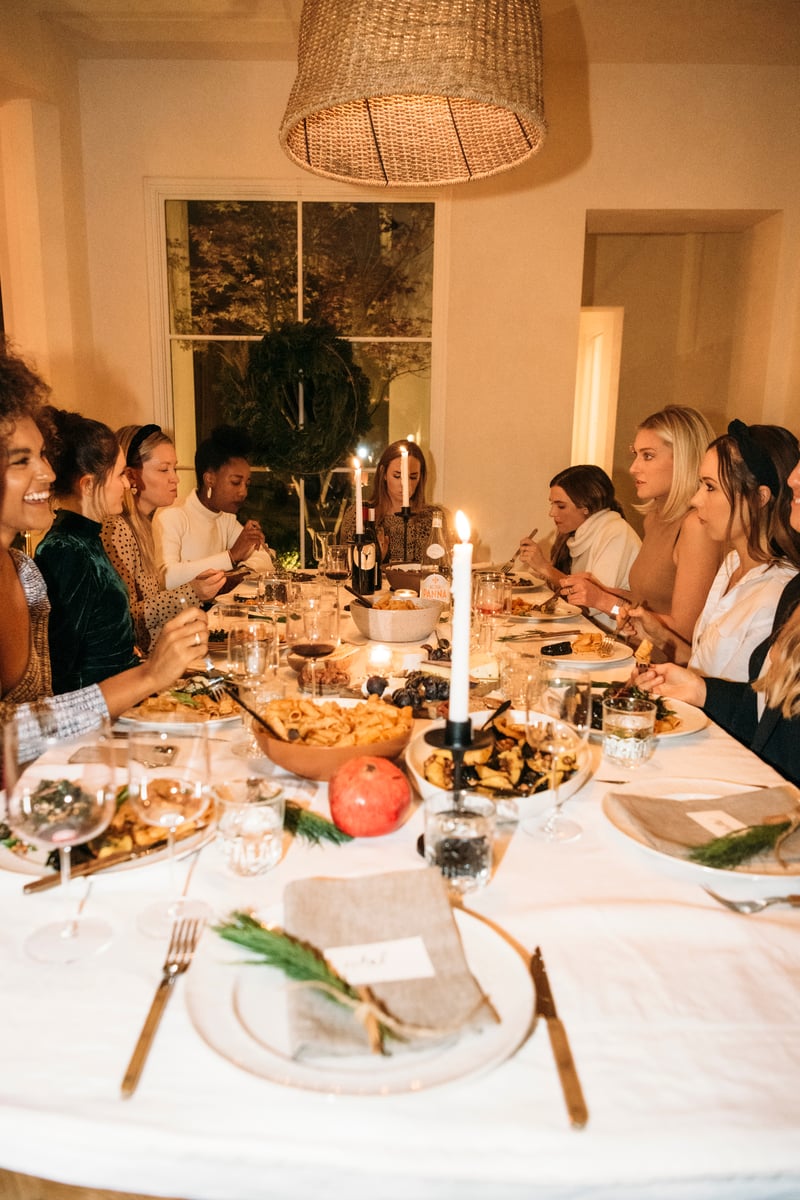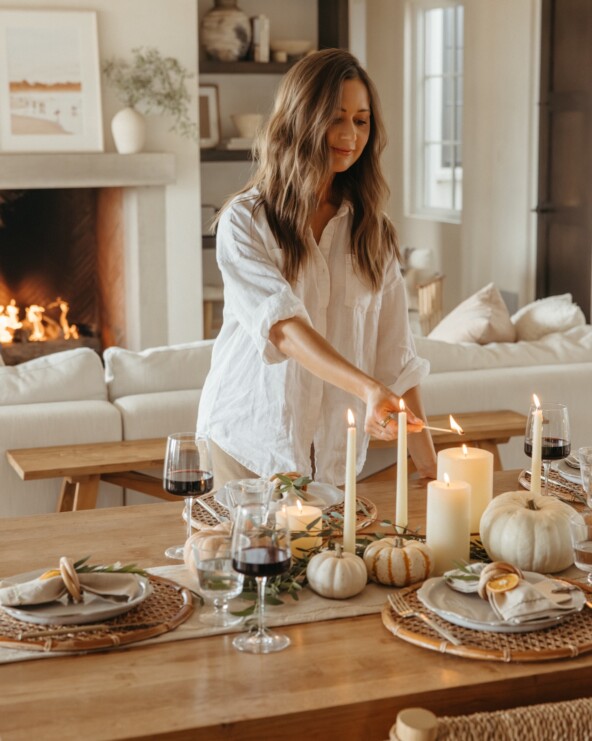Up next, step inside Rebekah Peppler’s dinner party in Paris.
Do you ever think about leaving your current life behind in search of adventure? What about quitting your job and relocating to another country to start a whole new life, immersing yourself in new sights, sounds, and tastes? Well, get ready for an emotional roller coaster if you do, but I’m sure Rebekah Peppler agrees that the university of life is always the best teacher.
When the American food writer and stylist, and celebrated author first moved from New York to Paris in 2015, her intent was clear: to focus on writing, and she did just that. This period led to her best-selling book, Apéritif: Cocktail Hour the French Way in 2018, and more recently her cookbook, À Table: Recipes for Cooking and Eating the French Way. While any change is daunting, moving across the world to live in a country that speaks a completely different language, not to mention the cultural shift, is huge but for Peppler, “it remains one of the best decisions I’ve made, both personally and professionally.”
So naturally, we were thrilled when she invited us (virtually) into her apartment on Paris’s 18th arrondissement for an intimate soirèe with friends to share in a delicious French meal complete with balcony views of the Eiffel tower. We also tapped Peppler for her insight on stress-free hosting, must-have cooking tool, and the ingredients she always has in her fridge/pantry, plus so much more. Prepare to be inspired!
Photos by Joann Pai.
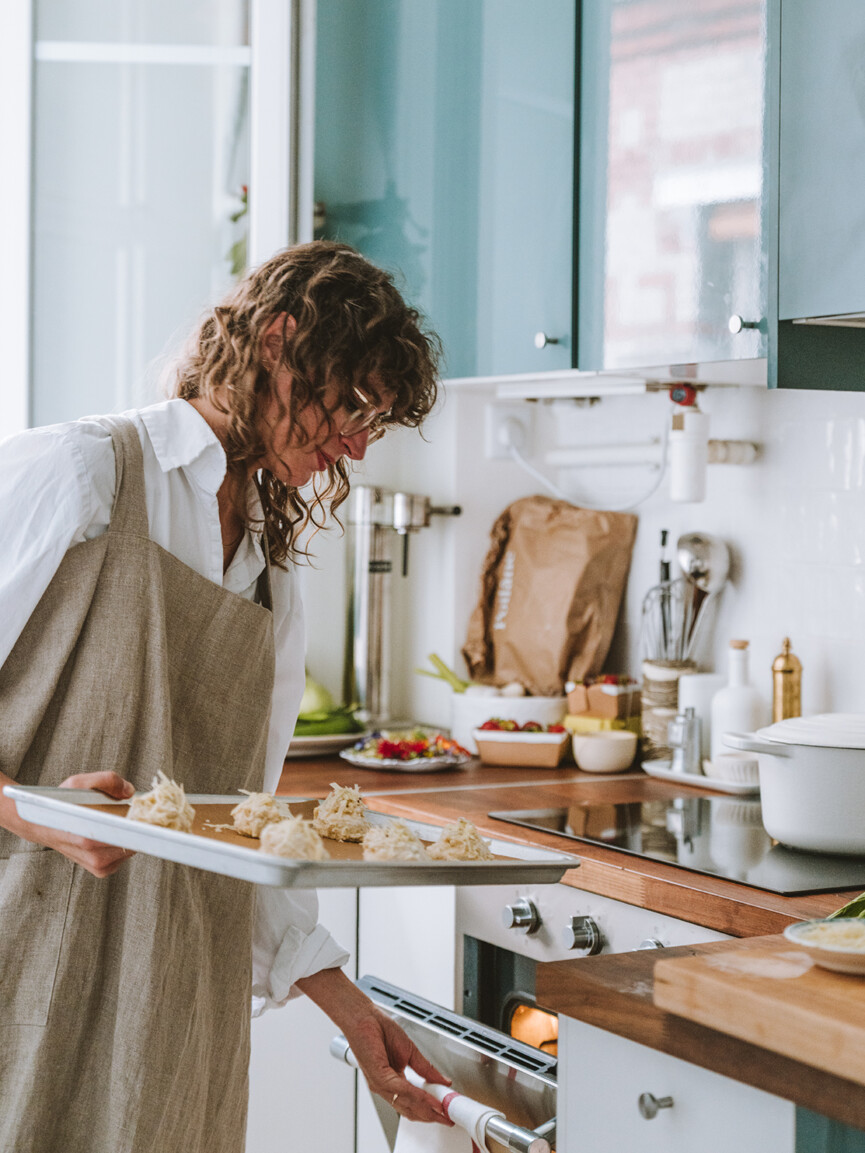
You are clearly influenced by the French style of cooking and living. What are some of the major differences between French and American cuisine and approach to food/cooking?
It’s hard not to be! Without romanticizing it too much, there is a distinctive kind of magic around French cooking and living. To me, that “French way” I sought to champion in À Table centers connection and enjoyment. There’s an inherent sexiness to it, I think. Recipes are often simple and flavorful—quality and beauty beat complicated technique nine times out of 10.
The biggest difference I’ve found between cooking in France and America is the way I shop for food. In the U.S. I go to one, maybe two shops to buy everything I need. In France, I shop on a smaller, more regular basis, and I have my neighborhood spots for different things: my cheese shop, my boulangerie, my produce shops if it’s not a market day, the place with the really good chocolate, the place with the really good spices, and so on. It takes more time, but much of the time, it’s as charming as it sounds.
Tell us more about the “new French” dishes you’ve created that reflect a modern French table?
From the earliest conception of À Table, I felt it was my responsibility to reflect, to some degree, the fact that France—and by extension, its food and cooking and eating—is so much more than the Julia Child recipes and master sauces that so many Americans imagine. The modern French table is multifaceted, and it owes a great deal to influences from Africa, from Asia, and from America too. As is so often the case in the way food and flavors have traveled around the globe, plenty of these dishes took root in France via periods of colonization, which is both dark and true and not a reason to avoid including them. The lie that “cuisine” was essentially born in France is not one I’m interested in perpetuating!
What is the secret to cooking simple yet sophisticated meals?
Good ingredients, attention, a little time.
You host impromptu gatherings weekly in your apartment in Paris’s 18th arrondissement. What tips can you share for hosting soirées that embody that coveted French charm?
I’m so looking forward to getting back into that regular, weekly rhythm of having people over again. I love to send an impromptu morning text saying come over at six tonight. I love the ritual of shopping at the market before spending quality time in the kitchen and later at the table. I love the moment just after the first person arrives and the first drink is poured. I think wherever you are, the key to a great gathering is about first enjoying the space you’re creating yourself, and then welcoming people into that space.
As for charm, many of us have been making and eating meals exclusively at home for over a year so a little ambience and everyday luxury go a long way. Set the table in advance, pull out the good glasses (and don’t freak out if someone breaks one), light an (unscented) candle or three, break out the really good butter.
How did you learn your culinary artistry?
I think the trick and beauty in any skill is to keep doing it. Keep practicing, keep asking questions, keep honing and eventually the wins will start to surpass the fuck ups. Learn from those mistakes, they’ll make excellent dinner party fodder at some point. Finding inspiration through art, travel, poetry, literature aka things outside the kitchen or plate has been extremely helpful to me as well.
Describe a typical day for you.
As a freelancer, the day can involve writing, avoiding writing, prepping for a shoot, developing or testing recipes in the kitchen, shooting a demo of one of my recipes, running around looking for a hard to find ingredient, being on set, invoicing, or—rarely but sometimes—opening something sparkling on a weekday afternoon, not looking at my phone or computer, and spending a few hours reading a book in the sun.
What do you drink when you wake? And what’s for breakfast?
When my partner is home, warm lemon water then coffee; when she’s not, coffee only until I get a dehydration headache and remember to drink water. I’m not a breakfast person but if I get hungry, I choose savory over sweet every time.
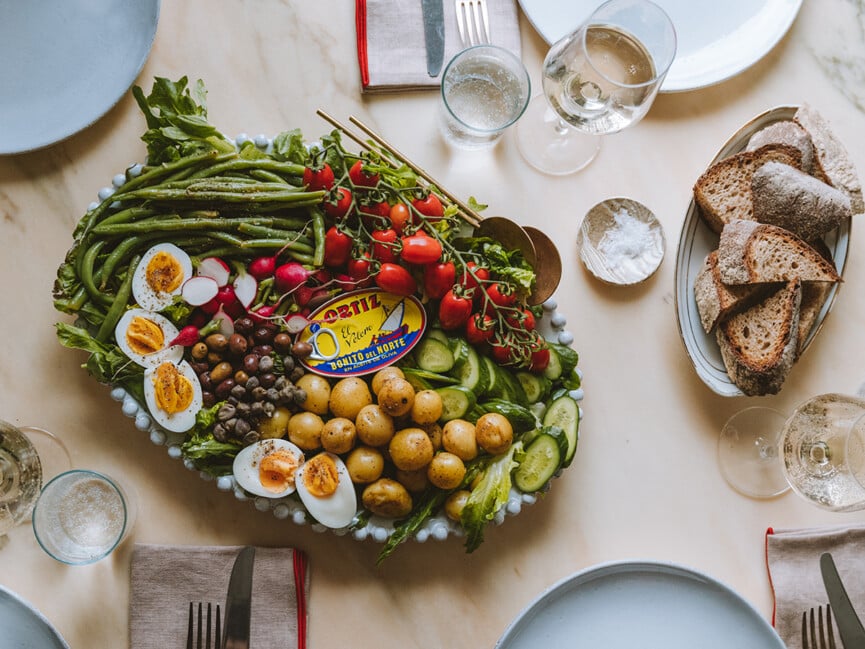
What’s your must-have cooking tool?
Not a sexy answer but, for work, my scale and American measuring cups and spoons. I travel with them. I work in metric and American measurements so they’re both vital regardless of where I am in the world. I also have multiple peppermills but the most functional is one with a little compartment to catch the grind so you can get an accurate measure without spilling it everywhere. The other two are just too beautiful not to have.
What kitchen tools are your absolute must-haves and why?
A fish spatula, a food processor (it doesn’t need to be fancy: my current one is extremely cheap, nearly broken and has done its job for 5+ years), and a salt dish. In my case, I use a small bowl for fine sea salt for cooking and have two ceramic storage jars nearby that hold different types of flaky salt for finishing.
The cooking tool you always give beginners and why?
A sharp, beautiful paring knife. I love a tool that’s both functional and beautiful.

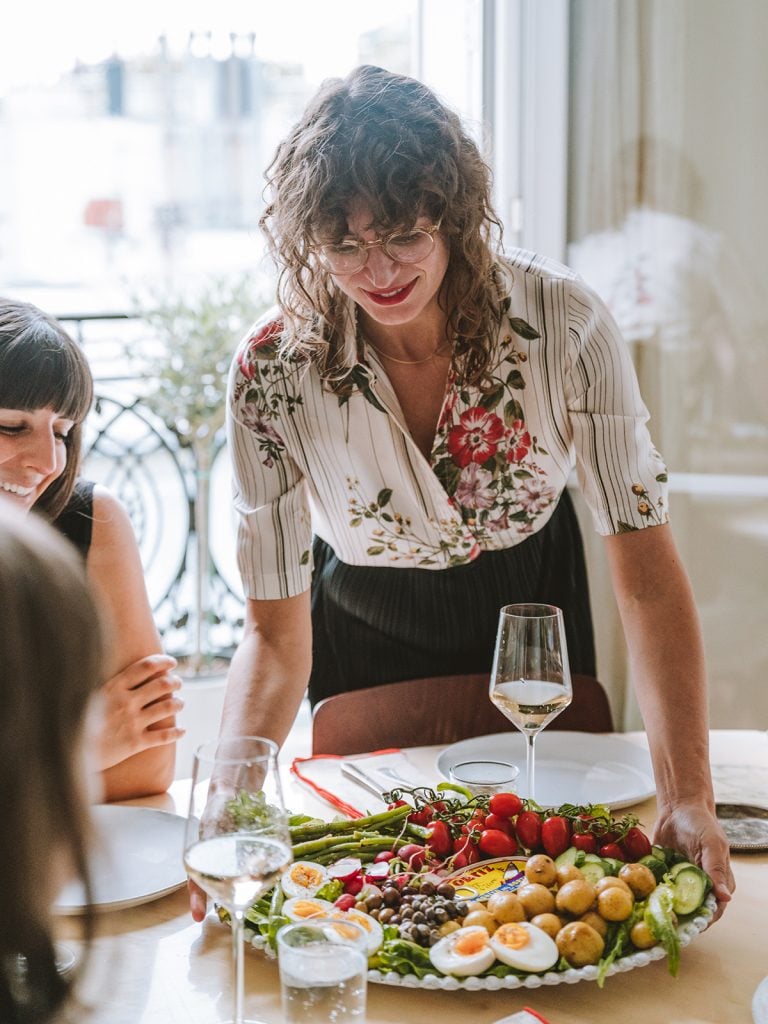
What are your favorite cookbooks and why?
I love cookbooks that both transport and teach. Right now that has been Hetty McKinnon’s To Asia, with Love and Ripe Figs by Yasmin Khan. I also have a special place in my heart for Madeleine Kamman’s When French Women Cook. It’s a memoir mixed with recipes and each chapter is dedicated to a woman (and a different region in France), whose kitchen she learned in.
Tell us a few things we’ll always find in your refrigerator?
Butter, cheese, sparkling wine, sparkling water, cornichons.
And what about your pantry? What do you always have on hand?
Good olive oil, possibly an excessive number of vinegars, rice, chocolate, tinned fish, Chicharrón de Serrano from Casa Glotón. I also always have lemons, garlic, and shallots in the house.
What scares you about entertaining? What scares you about cooking?
I’ve been having people over and cooking personally and professionally for so long I rarely have any real fear unless someone in the industry is very carefully watching my knife skills but I always, always have a little anxiety when walking into a space that isn’t mine or meeting new people at a dinner party. Social anxiety! It’s real!
Your signature dish for parties?
You know that real estate agent trick of baking off cookies before a showing? I bake off gougères before a dinner party. The house smells incredible and they’re the ideal apéro snack. Also, there’s usually a bowl of potato chips, my favorite snack.
The one meal you always make at home and why?
Tuna melts. It’s one of my favorite meals and I get to control the amount of cheese and pickles involved (there’s a lot of both).
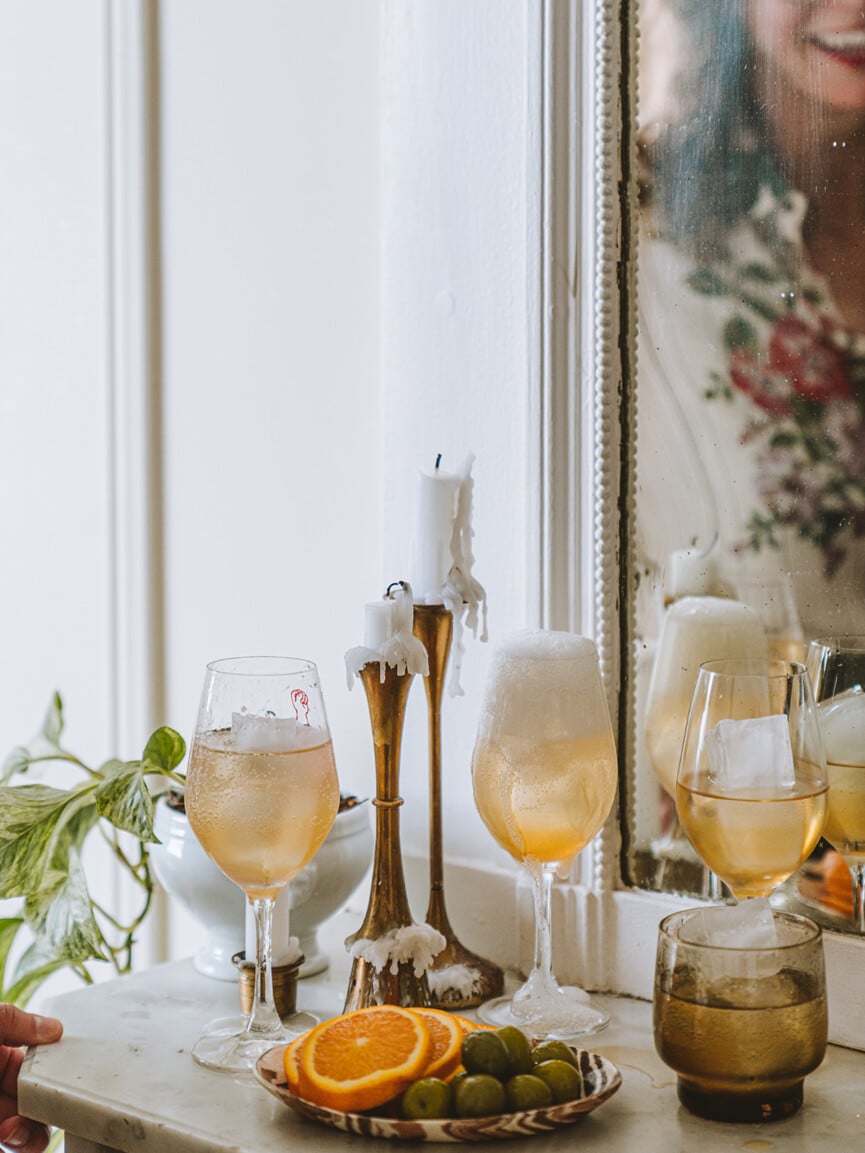
Dinner party pet peeve?
Assigned seating and/or alternating men and women. Social anxiety (see above) is a real thing, gender is a construct, and alternating seating arrangements by the binary is deductive and assumptive.
The perfect dinner party playlist includes:
I’m the worst at dinner party playlists but I am well aware that good music is essential to the vibe of a party. I delegate, put on one of my partner’s very excellent Spotify lists, and send all questions and compliments her way.
Go-to centerpiece solution:
I don’t usually opt for a centerpiece—there’s far too much food to fit onto the table as is—but I always set a beautiful little dish of nuts in the shell along with my favorite nutcracker on the table at the end of a meal. It can act as dessert alongside fresh fruit and chocolate or simply as something to keep nibbling on long after all the plates are cleared.
Dream dinner guests?
The bulk of the people I would dream to have à table are the friends who have actually gathered around my table somewhere at some point. With my closest friends spread around the world, the dream would be teleporting all of them to one place at one time. If we’re talking people I don’t know but wish I could feed, it would be a mess of poets and writers I admire: Hala Alyan, Kate Zambreno, Ada Limón, Leah Lakshmi Piepzna-Samarasinha, Jane Hirshfield, the list goes on.
Fill in the blank:
“A perfect meal should… foster connection.”
“It’s not a dinner party without… good conversation and someone spilling or breaking something.”
“Every cook should know how to… season with confidence.”

